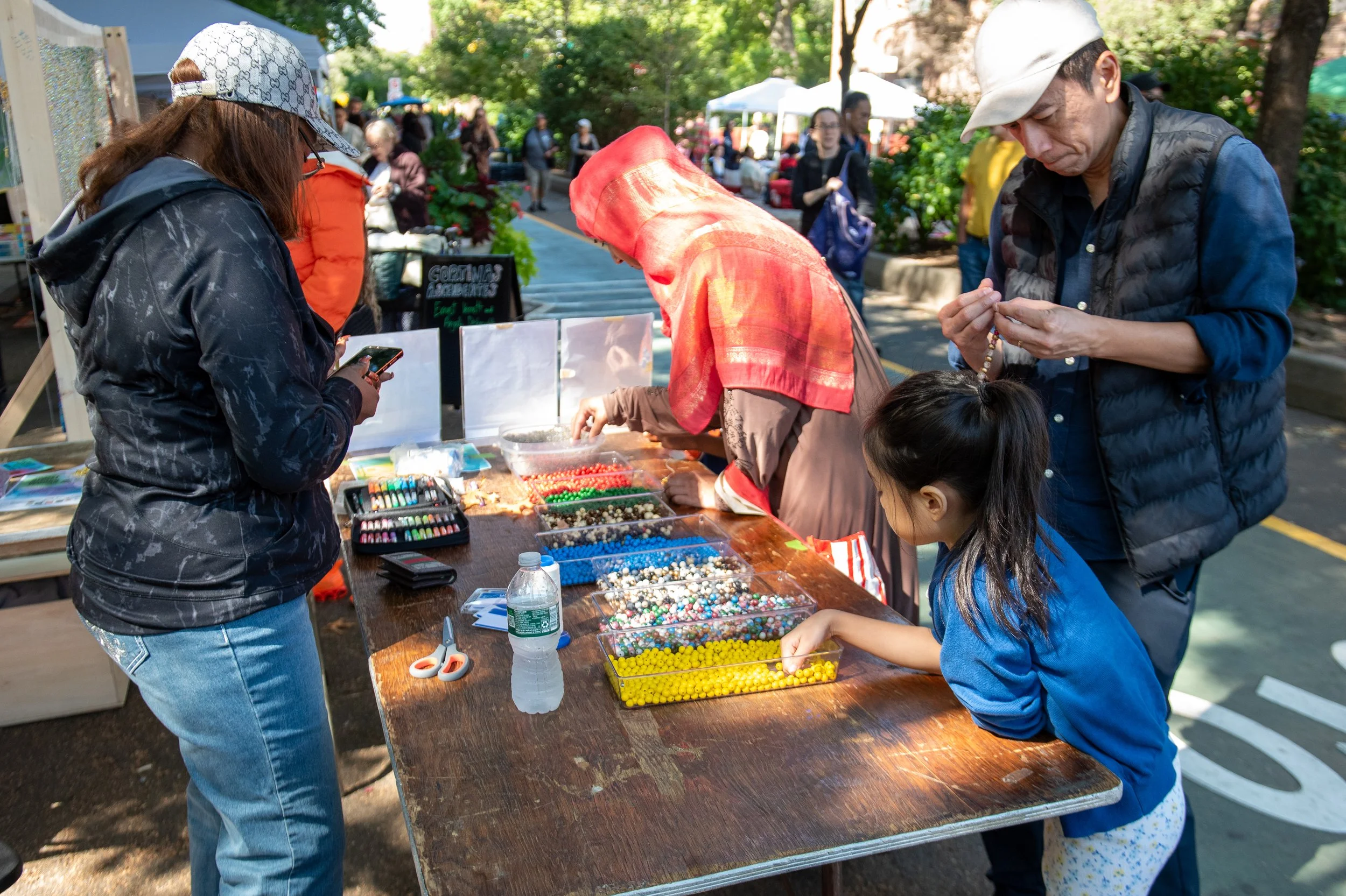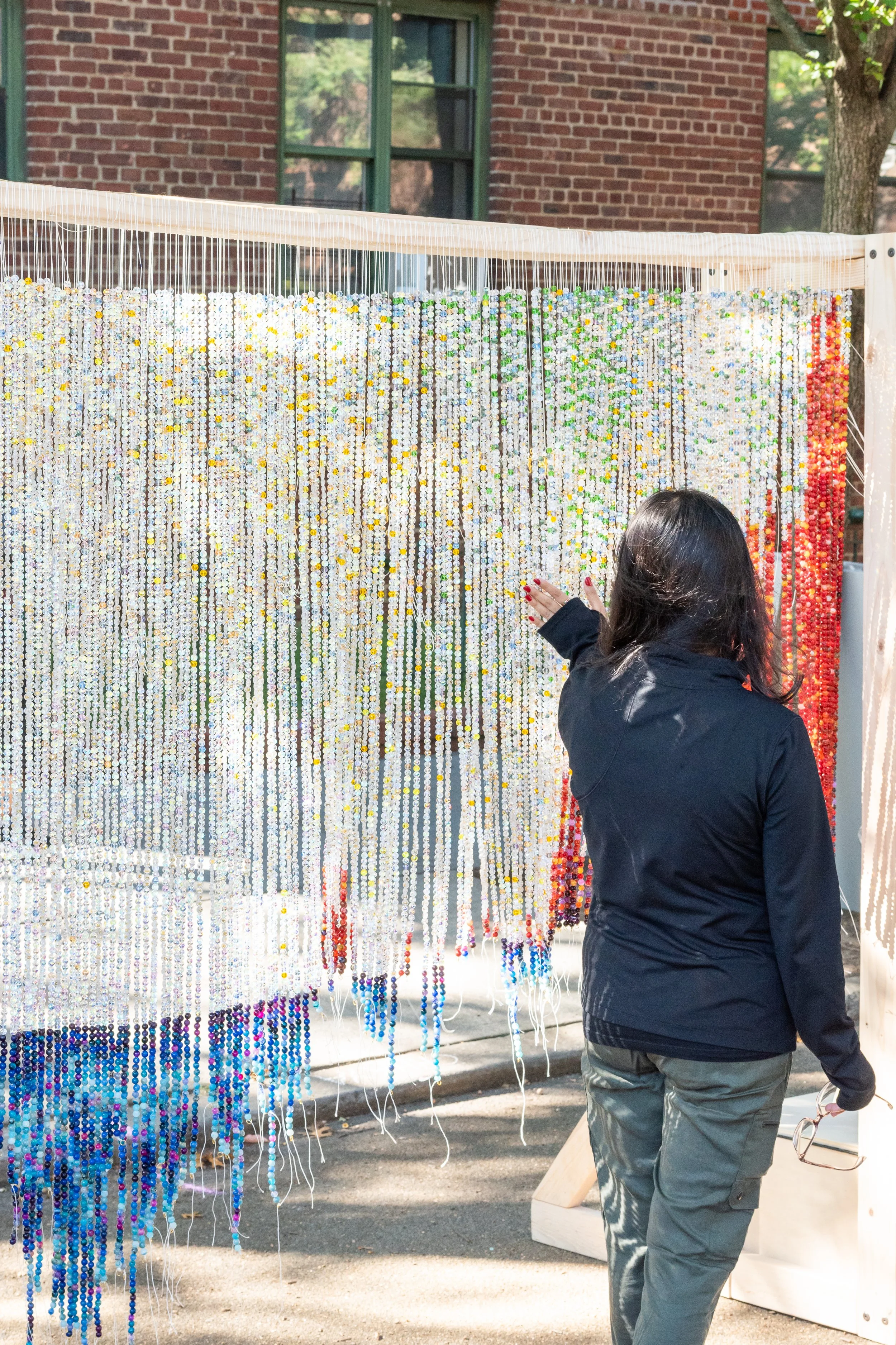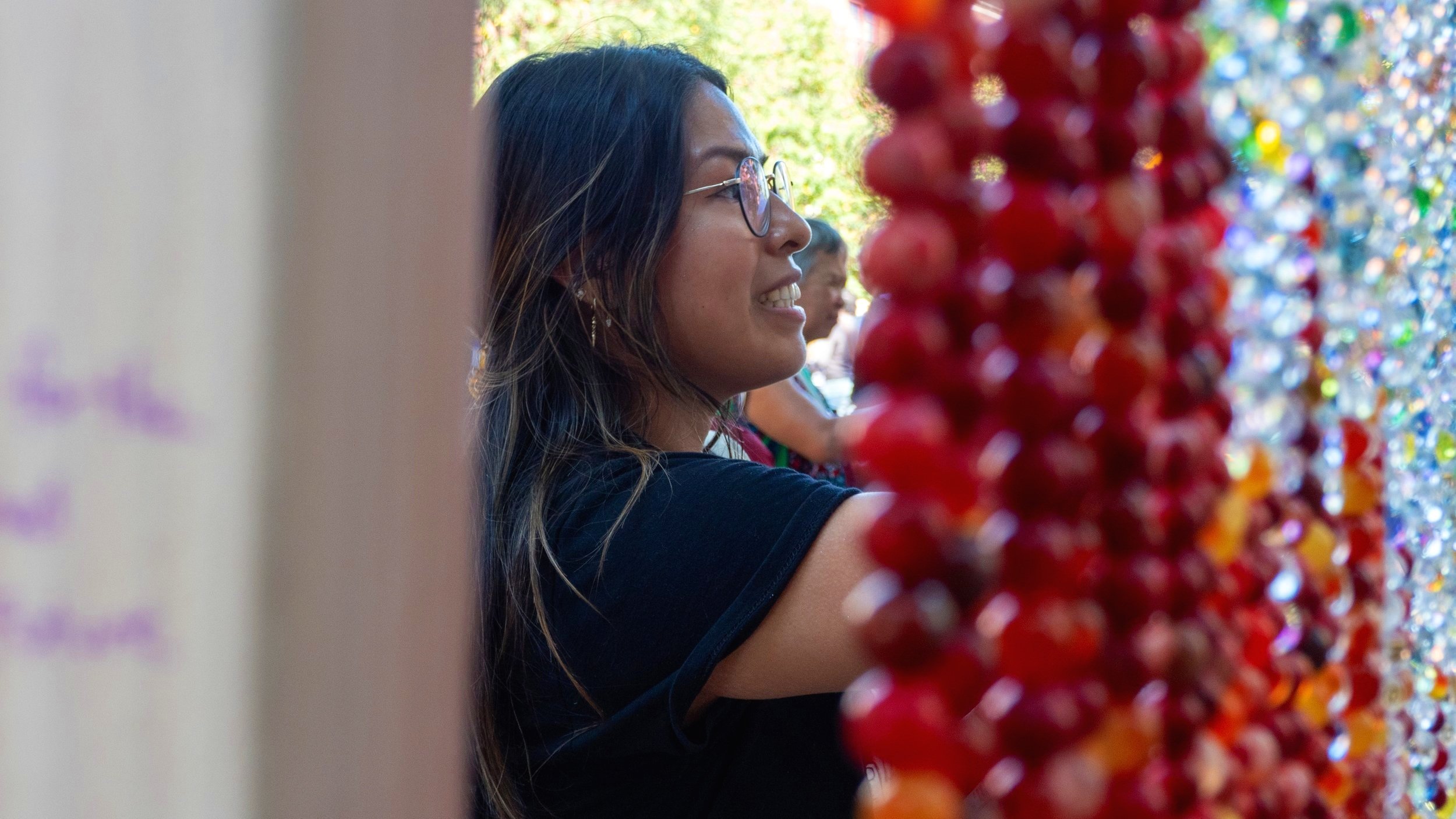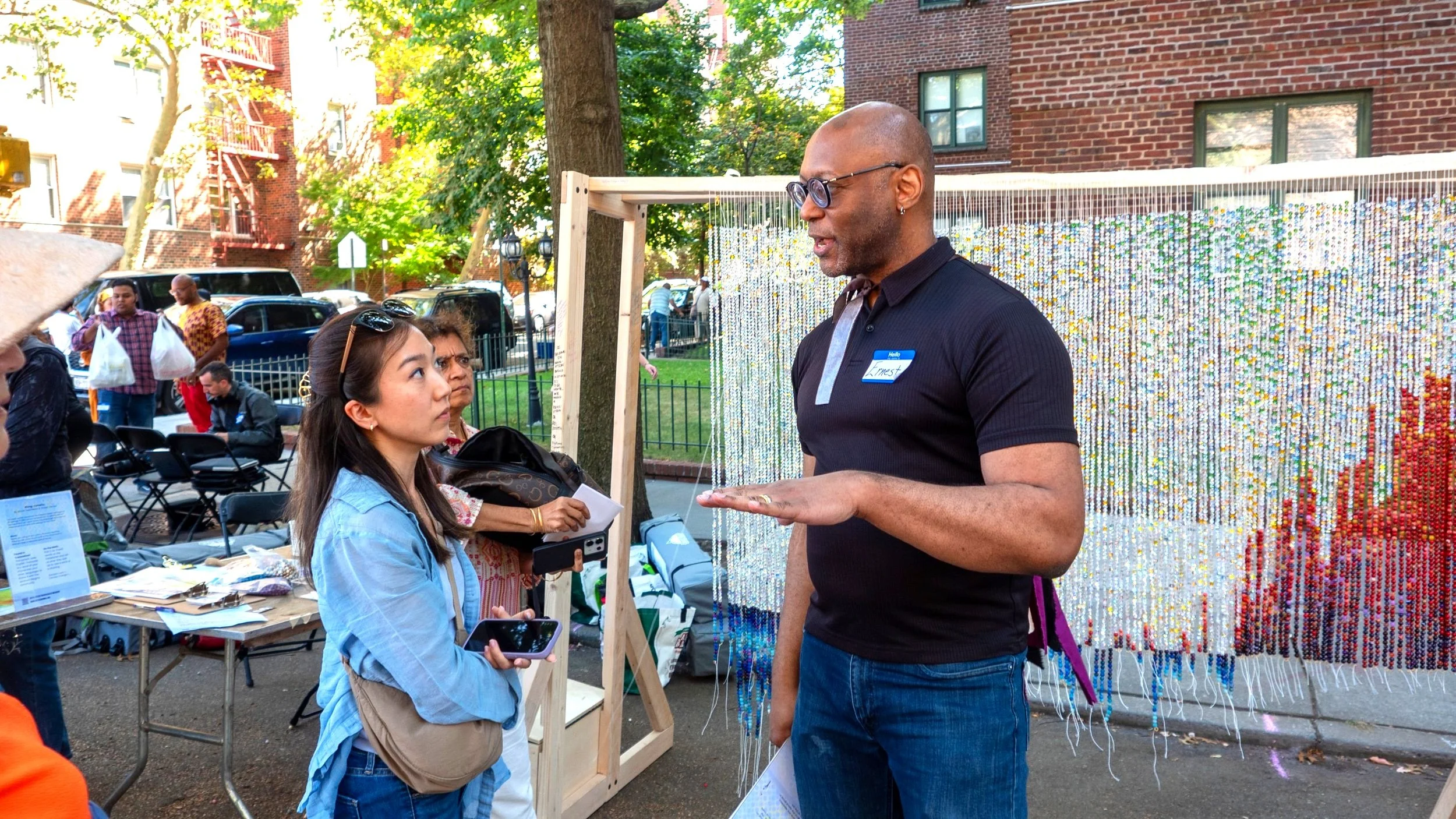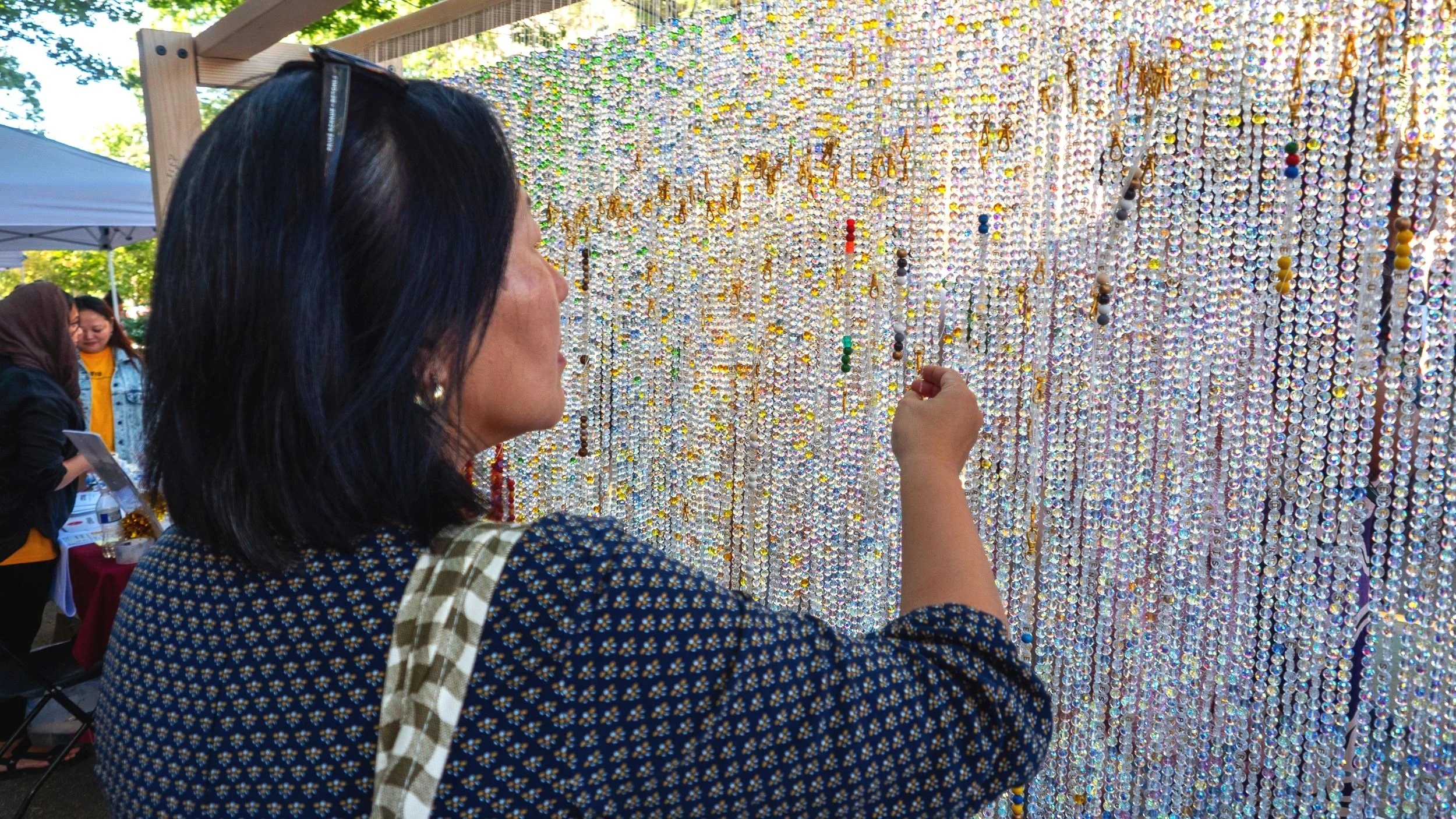Mean. Equity.
All Day, Ernest Verrett & Anjali Deshmukh/Street Works/MJN
In 2024, “Rising. Curtains.” invited passersby to join in the locally loved craft of community beading, an ancient, global tradition to reflect on the story of climate change and collectively design the unwritten future.
The “original” of the curtain tells the story of time as we know it, in the form of a glittering curtain made of over 12,000 glass and stone beads mapping global surface temperatures in comparison to the average from 1890-present. In 2025, a second curtain made of 12,000 beads weaves in the story of wealth inequality over the same time period, thanks to the amazing help of Stella Muti from the World Inequality Database. From the inside and outside, “front” and “back,” time moves in different directions.
Read down below for what we've learned beading hundreds of data strands.
This work is not finished without the audience. Interspersed throughout are camouflaged words, sequenced in vertical and horizontal poems that participants use throughout the day to add to the installation, and make a bead bracelet to take with them. No word is repeated. (Ask us if you want to know what the poems were!)
We’ve organized community beading on the streets of Queens since 2023. Across age, people have told us it’s calming, brings focus, and sparks creativity and community connection. As a part of rituals of continuity, community beading is also simple form of fashion that is affordable and often starts a flow gift giving, within families and among strangers.
Our goal overtime is to collectively create the curtain, reuse the same beads to create different patterns, and collectively design the beads themselves in a growing bead library that helps us and our communities adorn themselves in the art we make together.
2024: Rising Curtains
Hundreds of strands of time
The timeline of wealth, extrapolated by Stella Muti of the World Inequality Database, shows the share of wealth held by the top .001% from 1890–2020. Back in the 1890s, the top .001 owned about ~8.5% of wealth, compared to the bottom 50% with just 1.75%. Accurate wealth data is very hard to collect, especially since the wealthy are very skilled at hiding their money and global tracking systems haven't always been around. But even though the data is imprecise, we see a pattern. In crises, the balance of power shifts between two forces we call hoarders and reclaimers.
Hoarders—the .001%–1%—cling to their wealth as a form of power. Most believe they “deserve” it, including inherited fortunes, and that there is no such thing as enough. They protect their assets, extract as much as they can from others, and avoid risks that could threaten their position. They innovate creatively — around hoarding: financial tools to shield fortunes, monopolies to block competitors, and strategies to suppress ideas that might undermine their power. Fossil fuels and the systems built on them anchor their fortunes, and the fear of loss is so strong that they will use their wealth to keep us entrenched in planetary destruction.
Reclaimers, on the other hand, fight to restore what has been unjustly taken. They design policies that balance wealth, power and opportunity, from fair taxation to democracy and collective services. And they innovate for collective goods. After the crisis of World War II, when inequality was lower and public investment higher, Reclaimers laid the groundwork for industries like computing and built the foundations of the internet—later privatized by Hoarders. Renewable energy had Reclaimer roots too, though fossil fuel interests keep trying to slow or block it.
Crises have either been a moment of Reclamation or a chance for Hoarders to consolidate and protect their wealth. World Wars I and II triggered policies that reduced inequality and fueled collective innovation. But the late 1970s and 80s saw Hoarders regain the upper hand. During the 2008 financial crisis, banks were bailed out, households suffered, and the top 1% captured nearly all income gains in the following years. During COVID-19, stimulus reached families, but billionaires added over a $1 trillion to their fortunes in the first year alone. Crises no longer restore. They amplify inequality.
Now, the greatest crisis of all is here: climate breakdown. Despite the danger to humanity, hoarders double down on fossil fuels and profit from destruction while shaping the rules to protect their wealth and crush inventions for collective good. If we continue on this path, each crisis will be another opportunity for Hoarders to reshape the world as a dark age of poisons in our air and water, poverty, authoritarianism, and natural disaster.
The fear of loss and the addiction to wealth is powerful, and possibly a fundamental dark side of being human. We think system rehabilitation can heal, but in the meantime, only a great Reclamation — of extreme wealth, power, and resources — can stop the spiral and give us a fighting chance to meet the climate crisis with the invention we deserve.
Excessive Wealth Has Run Amok—This Must Stop - Inequality.org.
Dynasty Trusts: How the Wealthy Shield Trillions from Taxation Onshore
Causes of income inequality in the United States - Wikipedia
Impact of the 2008 Recession on Wealth-Adjusted Income and Inequality for U.S. Cohorts - PMC.
What’s caused the rise in income inequality in the US? | World Economic Forum.
A Year of Billionaire Pandemic Gains - Institute for Policy Studies.





